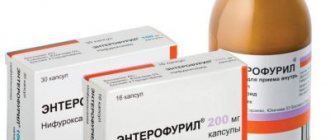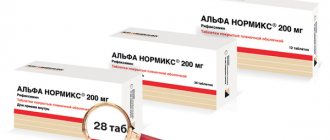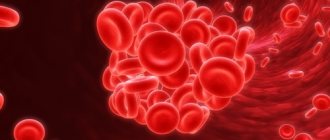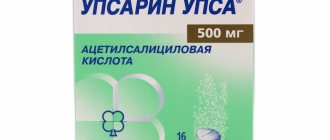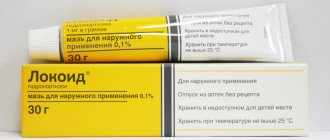The development of pathogenic microorganisms in the intestines often leads to diarrhea, digestive disorders, and inflammatory processes. For treatment in these cases, the antibiotic “Alpha Normix” is used. This is a universal-purpose product, the components of which destroy pathogenic bacteria. The effect is noticeable after the first use.
Description of the drug "Alpha Normix"
"Alpha Normix" is a drug belonging to the group of broad-spectrum antibiotics. Available in tablet form. The active ingredient is rifaximin (200 mg per piece). Another form is granules, on the basis of which a suspension is prepared for oral administration.
Sold in pharmacies with a doctor's prescription. The validity period is 3 years from the date of production. If you prepare a suspension, it is better to use it immediately. In extreme cases, storage in the refrigerator is allowed, but no more than 7 days.
Store tablets and granules in a cool, dark place. Children are not allowed. After the expiration date, the product cannot be used.
Reviews
Reviews both about the drug itself and about its compatibility with alcohol are very contradictory. Some of them are presented below.
Natalya: After testing for intestinal dysbiosis, the doctor prescribed Normix, a 6-day course. On the second day, it seemed that my health had improved, and I allowed myself literally 1 glass of sparkling wine with my friends. Watery, frequent stools began, my entire stomach ached, and my sleep was disturbed. I paused for 1 day to make sure all the alcohol came out, and started taking the medicine all over again. The treatment worked. Before that, I thought that all this incompatibility was a medical horror story. It turned out, no, there was a very real danger.
Necko: I suffer not only from intestinal problems. I had to take antibiotics more than once. And every doctor specifically said that these drugs with alcohol form extremely dangerous compounds, such that instead of treatment you can get hurt. I drank Alpha Normix in loading doses and not for 7 days, as in the annotation, but for about a month and a half. So I had such a side effect - I had no time for alcohol, honestly. Although I took it in parallel with salofalk and other drugs, the side effects may not be from Normix. After treatment there is real relief. Now I allow myself a glass.
Alevtina V: My husband was treated, the drug is not cheap, but instead of benefit it only made things worse. Every evening after work he slams port wine, and then says that it’s not the temperature that’s bad, but just side effects. However, once he was admitted to the hospital, he was cured with the same Normix. The truth in complex therapy. So draw your own conclusions.
Pharmacodynamics and pharmacokinetics
"Alpha Normix" belongs to the refampicin group of antibiotics. The active component binds parts of bacterial enzymes, inhibits RNA synthesis, which inevitably leads to mass death of pathogenic microorganisms of different groups. The drug allows you to successfully fight gram-positive and gram-negative bacteria.
The active substance of the antibiotic is not absorbed into the intestines and does not enter the blood. The components act only on the pathogenic intestinal microflora, which minimizes the likelihood of side effects. As a result of taking the drug, it is possible to reduce:
- the level of ammonia and other compounds that are products of the vital activity of microorganisms;
- the concentration of bacteria that are present and multiply in colonic diverticula;
- intensity of inflammatory processes with all accompanying symptoms;
- proliferation of pathogenic bacteria, if it is associated with the syndrome of rapid proliferation of intestinal microflora;
- an antigenic stimulus that can cause chronic inflammatory processes in the intestines;
- risk of infection complications during or after colorectal surgery.
The antibiotic acts primarily on the intestinal microflora. No more than 1% is absorbed through the intestinal mucosa. The active substance of the drug is present in the blood in small quantities after administration. The maximum concentration is reached 3 hours after administration. Reaction products are excreted in feces by 99% and in small quantities (up to 1%) in urine.
Alpha Normix: possibilities for use in gastroenterological practice
As part of the IX Congress of the Scientific Society of Gastroenterologists of Russia, held at the Central House of Scientists of the Russian Academy of Sciences, on March 3, 2009, a scientific symposium was held with the support of Solvay Pharma “Alpha Normix. Possible applications in gastroenterological practice.” The symposium was chaired by Professor L.B. Lazebnik, chief therapist of Moscow, director of the Central Research Institute of Gastroenterology. The basis of the scientific program was the reports of professors S.N. Mehdieva, E.A. Belousova, A.A. Ilchenko, who presented the specialists with the modern selective intestinal antibiotic Alpha Normix (rifaximin).
S.N. Mehdiev, Doctor of Medical Sciences, Professor
A.A. Ilchenko, Doctor of Medical Sciences, Professor of the Central Research Institute of Gastroenterology
E.A. Belousova, Doctor of Medical Sciences, Professor of MONIKI named after. M.F. Vladimirsky
Scope of application of Alpha Normix for gastrointestinal diseases caused by bacterial flora
Two main questions that we want to consider at the start of our symposium are what is the place of antibacterial therapy and the characteristics of the so-called ideal antibiotic in gastroenterology.
Diseases of the upper, middle, and lower parts of the gastrointestinal tract (GIT) are combined in terms of the choice of antibacterial agents and disturbances of the intestinal microflora. Dysbiosis is a violation of the quantitative and qualitative composition of microflora. Bacterial overgrowth syndrome, as a special case of many intestinal diseases (inflammatory bowel diseases, IBS included), has a clear clinical correlation - an increase in the number of microbes and pronounced clinical manifestations. Bacterial overgrowth syndrome leads to a number of pathological conditions - nutritional deficiency, endogenous intoxication, local inflammation, etc. Each of these conditions can be a separate direction of therapy, but the general approach to the entire pathogenetic list is decontamination.
How do we traditionally decontaminate the intestines? What do we consider so-called intestinal antibiotics? How to choose the optimal intestinal antibiotic? Neither tetracyclines, nor fluoroquinolones, nor nitrofurans, due to their limitations on drug and food interactions, the possibility of the formation of resistant strains and contraindications, are ideal drugs. What are the features of the ideal antibiotic, or decontaminant, that we would like to use in clinical practice?
These include a wide range of activities, e.g. the drug should act on both Gram+ and Gram–, both aerobes and anaerobes; rapid creation of high concentrations with low resistance and minimal side effects.
So, Alpha Normix. What is significant about this drug? First of all, it has a wide spectrum of antimicrobial action: it is active against most gram-positive and gram-negative, aerobic and anaerobic bacteria that cause gastrointestinal infections.
Almost 100% of the drug is present directly in the gastrointestinal tract, which is what creates high concentrations of the antibiotic, which are significantly higher than the MIC for enteropathogenic microorganisms. Alpha Normix does not have a systemic effect, but is local in nature. Rifaximin is poorly absorbed from the gastrointestinal tract when taken orally (less than 1%), so drug interactions are unlikely. A special feature of the drug is that we can absolutely safely combine it with other drugs, both for enteral and parenteral administration.
The issue of resistance is extremely relevant today. Very interesting data confirm that resistance does not increase in conditionally pathogenic and pathogenic bacteria, and the normal flora becomes protected from the action of the drug, i.e. high selectivity of exposure is observed. At the same time, we can absolutely safely repeat the administration of the drug Alpha Normix.
The dose and duration can be selected depending on the severity of clinical manifestations. Dose 1200 mg/day. Today it is accepted as optimal for the treatment of bacterial overgrowth syndrome. You can increase the dose, against the background of IBS, at 1600 mg - 80% achieved an effect, at 1200 - almost 60%. Today we can manipulate only one drug, only changing its dose depending on the clinical situation.
As for the duration of use of the drug, they tried to increase the duration from 7 to 10 weeks in patients with IBS. After 10 weeks, patients with IBS remain symptom-free (36% vs. 21% placebo).
Similarly, a clear demonstration of the safety and effectiveness of the drug is the category of patients with inflammatory bowel diseases. We state that it is not the antibacterial drug that regulates the dose and duration of use, but we, having a highly safe drug, select its dose and duration that we need. This leads to a wide variety of schemes for its use.
If there is a risk, for example, of reinfection, with diverticular disease, when inflammation occurs both inside and outside the diverticulum, a dose of 800 mg 2 times a day for 7 days every month for 1 or 2 years is proposed - highly effective prevention. And we see that all the main symptoms (flatulence) are significantly lower compared to dietary fiber, and the risk of complications is reduced by 8 times.
For liver pathology (hepatic encephalopathy), in comparison with other antibacterial agents, a dose of Alpha Normix of 1200 mg does not produce any undesirable side effects and is highly effective.
Regarding the issue of price/quality, in comparison with the original fluoroquinolones the figures are absolutely comparable. Yes, we are not talking about generics.
It is impossible to find any other antibacterial agent other than Alpha Normix, where the frequency of flatulence would be half as frequent as with placebo.
So, who is currently the ideal intestinal antibiotic that has a wide range of action with the ability to create high concentrations, with very low resistance, the ability to modify the dose and duration of use of the drug - this is Alpha Normix. Alpha Normix is a non-systemic, broad-spectrum antibiotic for the treatment of acute gastrointestinal infections and is indicated for use in travelers' diarrhea, intestinal overgrowth syndrome, hepatic encephalopathy, symptomatic uncomplicated diverticular disease of the colon and chronic inflammatory bowel disease, as well as for the prevention of infectious complications during colorectal surgical interventions.
PCES: do we always diagnose it and provide adequate therapy?
I will try to clarify the concept of “postcholecystectomy syndrome” (PCES) and show its role in the formation of bacterial overgrowth syndrome (SIBO).
PHES is a symbol for various disorders, recurrent pain and dyspeptic symptoms that occur in patients after cholecystectomy. The modern definition of PCES interprets it as a set of functional or organic changes in various organs associated with the pathology of the gallbladder or ductal system, which is aggravated by cholecystectomy or develops independently as a result of technical errors in its implementation.
The causes of PCES can be grouped, which makes it possible to facilitate the diagnostic search for the pathology that is included in the concept of PCES: diagnostic errors made at the preoperative stage and during operations; technical errors and tactical errors during operations - the so-called pure PCES and functional disorders associated with removal of the gallbladder; as well as exacerbation and progression of diseases that existed before surgery and were provoked by cholecystectomy.
Diagnosing the presence of stones is currently not difficult. But what are the diagnostic errors at the preoperative stage? Secretory insufficiency of liver function is not assessed, and pathology of the biliary tract of a functional or organic nature is not detected. Diagnostic errors are also associated with the fact that the extrahepatic bile ducts are not fully examined. Stones can form a block at any level, which, of course, aggravates the course of the postoperative period. And the operation itself, of course, is also a diagnostic stage. Cholecystectomy should not be an end in itself, and this is also a diagnostic stage; if there are any doubts, then during the operation those instrumental diagnostic methods that allow the surgeon to calmly leave the abdominal cavity should be fully carried out and used, so that the therapist does not have to think about it later , why PHES arose in a given situation. Tactical and technical errors are a purely surgical problem, I will not dwell on this in detail, but I want to draw attention to the fact that the variability of the ductal system, various additional hepatic ducts and the connection of the cystic duct with the common duct is very great. Long stump syndrome is what, in particular, can await us if we do not take into account all these features.
The cause of PCES may be unreasonable removal of the gallbladder, expanding the indications for its removal. And, of course, the loss of the gallbladder, especially a functioning one, affects the work of other organs and systems, and functional restructuring occurs. A classic example of synchronous work is the work of the Lutkins sphincter with the sphincter of Oddi, when the bladder contracts, the Lutkins sphincter and the sphincter of Oddi open and the bladder is emptied, when there is no reflex effect of the bladder on the sphincter of Oddi, it is in a spastic state, this leads to biliary hypertension syndrome, and so on further, this is how all pathogenetic therapy is built.
Those organic diseases that accompanied cholelithiasis, because cholelithiasis does not develop in one day, its course continues for several years, and sometimes decades, and therefore other pathologies of the digestive organs have the right to join this pathology.
First of all, I would like to note that the course of cholelithiasis in almost all patients is accompanied by a decrease in the secretory function of the stomach with the development of atrophic processes in the antrum.
Due to the fact that the concentration function of the gallbladder is lost, because the concentration of bile acids, which have a bactericidal effect in the hepatic portion and the cystic portion, differ by an order of magnitude, which is an additional condition for the development of excessive bacterial growth in the very center of the duodenum, where crossover occurs all types of digestion. Thus, pathology of the biliary tract can cause structural and functional disorders of the liver, which are often not corrected by surgery, becoming the cause of PCES. The biliary tract is connected to the excretory ducts of the pancreas, and biliary pathology leads to the development of acute and chronic pancreatitis. The latter can also cause PCES. SIBO has now entered the clinical arena.
Diagnosis of PCES should adhere to two positions - this is the diagnosis of diseases that have worsened and developed after cholecystectomy, and the identification of technical errors of the operation or complications after the operation. Diagnostic methods of PCES are quite simple - clinical, laboratory and instrumental. These are available screening and clarifying methods, in which you can additionally see some kind of pathology that screening methods do not make it possible to identify. Spasm of the sphincter of Oddi, dyskinesia of the extrahepatic bile ducts, stomach and duodenum, microbial contamination, gastroduodenitis, long cystic duct after cholecystectomy may be the cause of some of the symptoms included in PCES, which should be deciphered based on the examination results. The formulation of the diagnosis should, of course, include the syndrome itself in the first place, information about the operation, and then functional disorders and some other concomitant pathology.
I will talk about conservative treatment in connection with the question of whether this syndrome is treated correctly and fully. If we talk about the basic principles of drug treatment after PCES, they should include four provisions: ensuring the normal outflow of bile and pancreatic juice into the duodenum, normalizing the chemical composition of bile. The resolution of SIBO in the small intestine, due to both a decrease in the bactericidal properties of the bile itself and the bactericidal properties of pancreatic juice, because these two processes are interconnected, we see that there are prospects in terms of its treatment. And although there is currently no clinical material and experience regarding the treatment of patients with SIBO in the small intestine after cholecystectomy, we do have literature data. When the selective antibiotic Alpha Normix, which is not absorbed into the gastrointestinal tract, appeared, one can think that this drug brought quite a new milestone in the treatment of patients with PCES.
The therapeutic potential of this drug in patients with SIBO - there is a pronounced clinical effect of Alpha Normix, showing its advantage in the treatment of such patients compared to traditional tetracycline drugs. The drug reduces the formation of ammonia and other toxic compounds by bacteria, which, in the case of severe liver disease, accompanied by a violation of the detoxification process, are involved in the pathogenesis and sympathology of hepatic encephalopathy; increased proliferation of bacteria in intestinal microbial overgrowth syndrome; the presence of bacteria in the colonic diverticulum that may be involved in inflammation in and around the diverticular sac and may play a key role in the development of symptoms and complications of diverticular disease; an antigenic stimulus, which, in the presence of genetically determined defects in mucosal immunoregulation and/or protective function, can initiate or permanently maintain chronic intestinal inflammation; risk of infectious complications during colorectal surgery.
SIBO for pancreatic diseases
To understand what bacterial overgrowth syndrome (SIBO) is and whether it can be corrected at all, you need to know what the normal microflora of the gastrointestinal tract is, and remember that the population of the gastrointestinal tract is not the same. In the proximal small intestine there is a protective mechanism that allows a relative constant of 104-105 CFU/ml of intestinal contents to be maintained.
An increase in the content of microorganisms (over 105 CFU/ml) is SIBO, and I emphasize that this term, according to modern concepts, refers exclusively to the proximal parts of the small intestine. Both dysbiosis and SIBO are not a diagnosis, but a secondary syndrome, and the syndrome is microbiological. It does not always develop; one can even say that it can develop with a certain pathology. Treatment of both dysbiosis and SIBO is not an end in itself. First of all, you need to eliminate the cause, treat the underlying disease.
Pancreatic disease (most often chronic pancreatitis) is accompanied by three syndromes: impaired absorption processes, SIBO and impaired motor function of the gastrointestinal tract.
Toxins from opportunistic flora that colonize the small intestine in SIBO damage membrane enzymes and thus disrupt the part of digestion that occurs at the membrane of the small intestine. And therefore, we note violations of cavity, parietal, and membrane digestion, and all these components act interdependently and synergistically. But the main thing in the characteristics of these disorders is the deficiency of enzymes in the cavity of the duodenum and excessive colonization of the proximal parts of the small intestine by opportunistic pathogenic microorganisms.
The first syndromes that accompany pancreatic pathology are digestive disorders. In this case, we are talking about the fact that there must be adequate enzyme therapy - before correcting SIBO, you need to establish digestion, and with fairly high doses of enzyme preparations. In patients with chronic pancreatitis, SIBO occurs in 40% of cases. In chronic pancreatitis, SIBO is one of the most common causes that lead to insufficient effectiveness of enzyme preparations. The use of Creon in some cases may not be sufficient to eliminate SIBO. And then exposure to antibacterial drugs is necessary. In this case, decontamination of the small intestine is carried out. Let me emphasize that this should be selective decontamination, affecting primarily pathogenic and conditionally pathogenic flora and not affecting representatives of normal flora.
What should be the requirements for an optimal antibacterial drug? First, the drug should not be absorbed from the gastrointestinal tract. It should create a high concentration in the intestinal cavity and should not suppress normal flora. It should have a fairly wide spectrum of action against aerobes and anaerobes, a minimum of side effects and, of course, proven effectiveness.
To what extent can we say that rifaximin (Alpha Normix) meets these criteria? The drug is not absorbed or very little is absorbed from the gastrointestinal tract and therefore gives a high concentration both in the lumen and in the mucosa. Accordingly, since it is not absorbed, it has minimal side effects and is well tolerated. Has a wide spectrum of antibacterial action. When using rifaximin, the level of normal flora representatives drops by the first week, but by the second week their level returns to the original level, i.e. Rifaximin can be considered a selective drug that does not affect normal flora. And it does not cause resistance, i.e. essentially meets all the requirements that we would like to see in an antibiotic.
Indications for use of "Alpha Normix"
Tablets and suspension are taken in case of acute conditions and chronic intestinal diseases:
- microflora overgrowth syndrome;
- diverticular pathology of the colon;
- traveler's diarrhea;
- acute infectious processes in the intestines;
- chronic intestinal inflammation;
- prevention of possible complications after colorectal surgery;
- hepatic encephalopathy.
Summary
Alpha Normix is an antibacterial drug used in the treatment of infections and acute diseases of the gastrointestinal tract. Despite the fact that when combining it with products containing ethyl alcohol, life-threatening conditions do not develop, the effect of the medicine will nevertheless be lost. And the patient’s general well-being may worsen.
Based on the above, efforts should be made to avoid concurrent use of the drug and alcohol. After treatment is completed and the medication is removed from the body, drinking will no longer have any effect on the therapy.
In contact with
Contraindications and side effects
The drug is indicated for patients with various diseases, with the exception of:
- all types of intestinal obstruction;
- ulcerative intestinal lesions;
- individual intolerance to the active or auxiliary components of the tablets;
- the appearance of allergic reactions;
- Also, the drug should not be given to children under 12 years of age (by agreement with the doctor, the suspension can be given to children from 2 years of age).
One of the advantages of Alpha Normix antibiotics is the absence or extremely rare occurrence of side effects. However, in rare cases, the following consequences may occur:
- nausea;
- vomit;
- pain in the epigastric region;
- headaches;
- dizziness;
- loss or disturbance of taste;
- increased blood pressure;
- dyspnea;
- weakness, cold sweat;
- Quincke's edema;
- rash;
- diarrhea;
- heartburn.
In most cases, symptoms disappear without additional medications within the first hours after administration. If they persist for several days, the Alpha Normix tablets and suspension are discontinued. Symptomatic treatment and change of course are indicated. To do this, you must consult a doctor.
About danger
There is quite a lot of information that antibacterial drugs and alcohol do not have a mutual effect in the human body. Is there any reason to believe?
Indeed, most antibiotics do not react with ethyl alcohol. However, there are groups of medications that, when taken simultaneously with strong drinks (of any strength) have serious consequences. These include, for example:
- group of tetracyclines,
- anthracyclines,
- betalactamides,
- cephalosporins,
- aminoglycosides and some others.
In particular, medications such as nizoral, metronidazole, and biseptol are almost guaranteed to cause side effects when combined with alcohol.
The compatibility of the above medications and alcohol is not the same.
Some drugs put quite a lot of stress on the liver. Thus, the organ cannot cope with the simultaneous utilization of the drug and ethanol. The poison stays in the tissues and organs longer, causing prolonged intoxication, and then a severe hangover.
Other medications inhibit the removal of acetaldehyde, an even stronger poison than ethyl alcohol, which is formed during its breakdown. Consequently, the toxic substance does not leave the body, accumulates and provokes toxic shock.
Some antimicrobial drugs can penetrate the tissues of the brain and nervous system. Under the influence of alcohol-containing products, unpleasant processes already occur there, and if a medication is also ingested, the reactions can be unpredictable.
Instructions for use "Alpha Normix"
Antibiotic tablets must be taken orally with water and without chewing. The need to use the drug, its dosage, frequency and duration of therapy is determined by the doctor. As a rule, adults and children over 12 years of age can take 1 tablet no more than once every 8 hours. An alternative regimen is 2 tablets per 24 hours. The course can last no more than 7 days. It can be repeated only after a break of 30 days.
When using the suspension, it is necessary to observe the maximum daily dosage, which depends on the age of the patient:
- children over 12 years of age and adults - from 600 to 1200 mg - this corresponds to a suspension in a volume of 10-20 ml, divided into 2 or 3 doses per day;
- children from 6 to 12 years old – from 400 to 800 mg: a suspension of 10-20 ml is taken 2 times a day;
- children from 2 to 6 years old - no more than 200-600 mg: a suspension of 5-10 ml is taken 2 or 3 times a day.
The total duration of the course is no more than 7 days. The advisability of further continuation or change of therapy is determined by the doctor.
No cases of overdose have been registered. The maximum permissible daily dose is 2400 mg of the active substance (rifaximin). If an overdose occurs, induce vomiting, rinse the stomach, and, if necessary, call emergency help.
Attention!
If the patient's intestinal mucosa is damaged, the substance may enter the bloodstream, causing the urine to turn an intense orange color. This is a normal, understandable phenomenon.
Help
It has already been noted that acute reactions posing a risk to the patient's life are unlikely to occur. However, an increase in the symptoms of the disease for which the drug was prescribed is to be expected. In this case:
- stop drinking alcohol immediately;
- apply proven effective methods (for this particular patient) to alleviate
- state of intoxication, rapid sobering up;
- ensure bed rest, drink plenty of fluids, and do not provoke the development of the clinic with food;
- Seek medical help if symptoms worsen.
After bringing the patient back to normal, it is necessary to report the incident to the specialist who prescribed the drug. He will correct the course, since the medication taken prior to taking alcohol has been neutralized.
